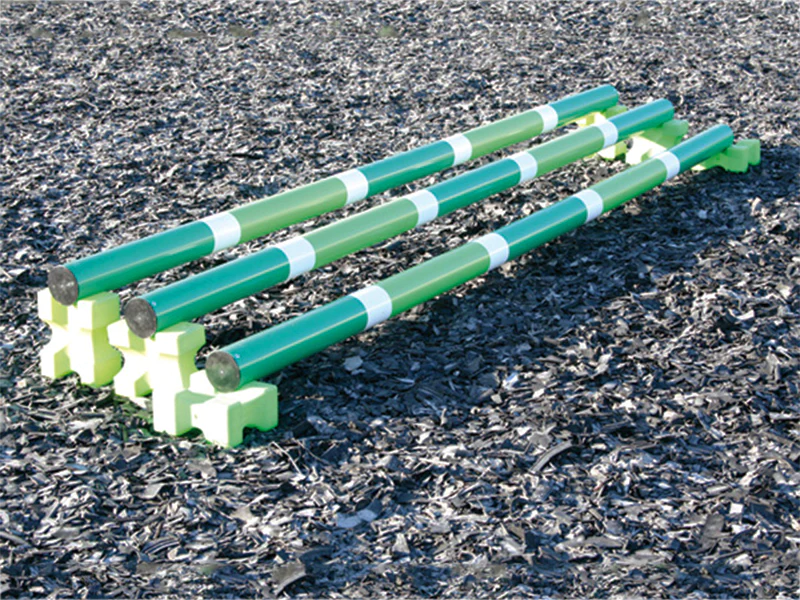Crossing Hurdles: Navigating the Equestrian Dilemma of Wood vs. Plastic Horse Jumps
When it comes to equestrian sports, the jumps play a pivotal role in training and competition. As riders and trainers continually seek the best equipment for their horses, the choice between wooden and plastic horse jumps has become a significant dilemma. In recent years, PolyJumps, a leading manufacturer in the UK industry, has emerged with its innovative plastic jumps, boasting a lifetime warranty. Let's dive into the differences between wooden and plastic horse jumps and explore the benefits of PolyJumps.

Wooden Horse Jumps:
Wooden horse jumps have long been a staple of the equestrian world. They have a timeless, rustic charm that often blends in perfectly with the surrounding environment. But wooden jumps have additional difficulties of their own.
Durability: Wooden jumps that are kept up properly can endure for a long time, but they are prone to rot, weathering, and horse damage. To guarantee longevity, regular maintenance is necessary.
Weight: Compared to their plastic jumps, wooden jumps are typically heavier. This can make them cumbersome to move and arrange in different configurations, impacting the efficiency of training sessions.
Cost of Maintenance: Repainting, sealing, and repairs are among the more frequent and expensive maintenance that wooden jumps may need. These maintenance costs can mount up over time.

Plastic Horse Jumps – The Rise of PolyJumps:
Plastic horse jumps have become more and more popular in recent years, with PolyJumps setting the standard for innovation. The following explains why plastic jumps—especially those made by PolyJumps—have revolutionized the equestrian world:
Weather Resistance and Durability: PolyJumps are extremely weather resistant and durable because they are made of premium polyethylene. They last longer because, unlike wood, they are resistant to rot, warping, and degradation from exposure to rain or strong sunlight.
Portability and Lightweight: Compared to their wooden counterparts, plastic jumps are substantially lighter, which facilitates handling and transportation. This lightweight feature offers flexibility in training environments by enabling quick and simple setup. Each polyjump item can be filled with sand as well, which is a feature wooden jumps lack.
Safety: The design of PolyJumps prioritizes safety. Because the plastic material is soft when hit, there is less chance of injury to riders and horses when training.
Versatility in Design: Trainers and riders can create visually stimulating and challenging courses with PolyJumps because they come in a variety of vibrant colors and designs. Training sessions become even more versatile with the ability to alter configurations.

Lifetime Warranty:
One standout feature that sets PolyJumps apart from other plastic jump manufacturers is its lifetime warranty. This commitment to quality and durability speaks volumes about the confidence the company has in its product. The lifetime warranty provides peace of mind to equestrians, knowing that their investment is protected against manufacturing defects.
Equestrians looking for durable, low-maintenance alternatives may find that modern materials, like those offered by PolyJumps, provide a more sustainable and long-lasting solution. These materials are often engineered to withstand the challenges of the equestrian environment, offering riders reliable and durable options for their training and competition needs.
In summary,
The decision between wooden and plastic horse jumps has grown more complex as the equestrian industry develops. Although wooden jumps are always in style, plastic jumps—especially those made by PolyJumps—offer many advantages that make them more useful. In addition to providing a lifetime warranty, longevity, and safety, PolyJumps is dedicated to providing the highest caliber of equestrian training and competition. Although the choice between wood and plastic may ultimately come down to personal taste, PolyJumps' inventive advancements imply that plastic will likely be the material of choice for horse jumps in the future due to its dependability and versatility.
Learn more about Polyjumps below
Thank you for reading! Please leave a comment, and share their experience if you have used Polyjump products before.

















